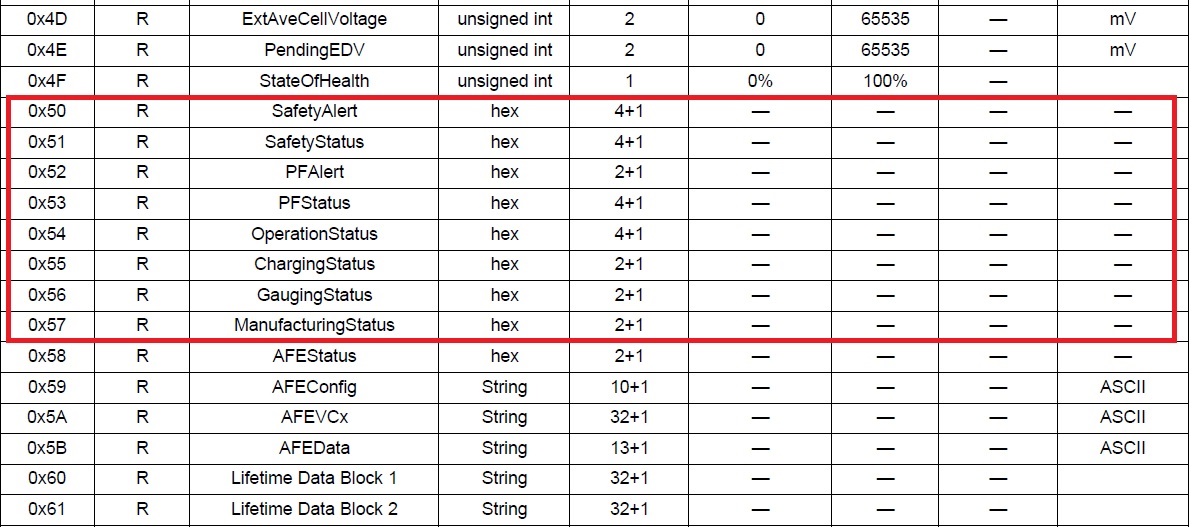Other Parts Discussed in Thread: BQSTUDIO
Hi,
I'm interfacing with a BQ78350-R1 with 1.04 firmware and having difficulty getting sensible readings from the manufacturer access list.
My code reads all unsigned int registers with no problems, it also reads the serial number register (0x1C) which is stored as a 2-byte hex.
The problem I'm having is when reading registers 0x50 to 0x57 which are stored as 4+1or 2+1 hex bytes. Could someone explain to me what the "+1" means?
For example, register 0x51 - SafetyStatus should return the contents of ManufacturerAccess() 0x0051 and they are all zeros when I use bqstudio which is what they should be.
When I request 0x51 from my microcontroller, I should receive 0x00 0x00 0x00 0x00 but I'm getting 0x04 0x00 0x00 0x00 in that order.
Should I be requesting 5 bytes and discarding the first?
Also, yes I have Full Access.
Thank you


